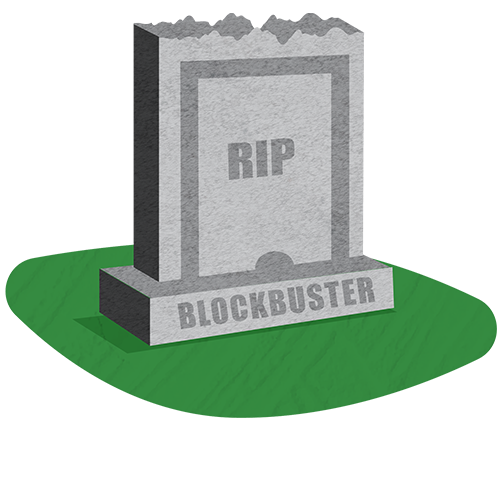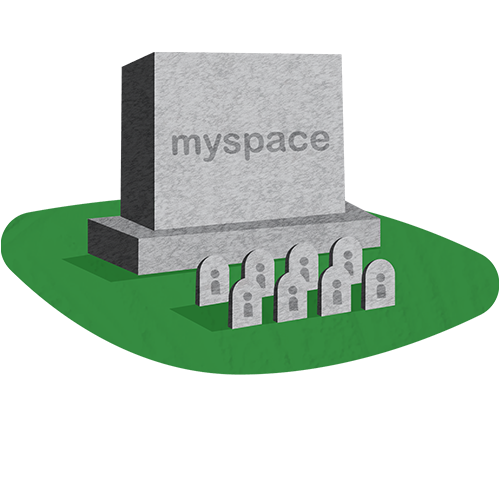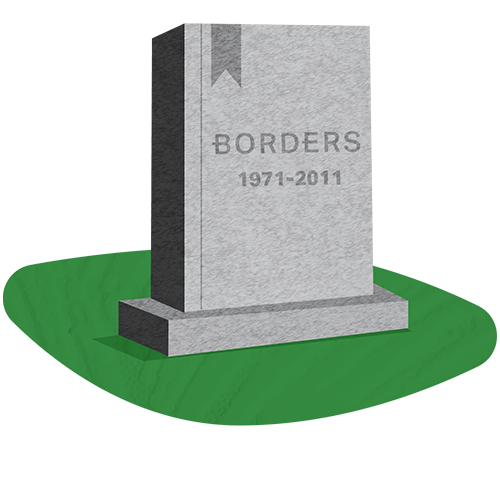It’s late October — time for Halloween, when CMOs are haunted by the memory of brands that are no longer with us. It may seem a little exaggerated, but the demise of a few brands (and the “what ifs” of the future) can certainly cause a few shudders. Avoiding the “Brand Graveyard” can be tricky, which is why it’s important for marketers to look beyond short-term priorities to the long-term goals that will help keep their brands alive.
According to our brand longevity research with The Harris Poll, eight in ten marketing professionals say longevity plays a central role in conversations and planning with colleagues. However, 64% worry they focus too much on the short term — a spooky statistic that increases to 74% in enterprise-sized companies (those with more than 1,000 employees). Understanding the convergence of key brand attributes — their heritage, their product, the changing attitudes and behaviors of their customers, and the environment surrounding them (e.g. technology) — can help brands achieve longevity and cultural relevance over a sustained period of time.
Let’s take a look at some lessons marketers can learn from some not-so-lucky brands to steer clear of the brand graveyard.

The Victim: Blockbuster
At its peak, former video rental giant Blockbuster owned more than 9,000 stores nationwide. In the era before video streaming, Blockbuster offered what no other rental service could: more than 8,000 titles, all in one place, for low prices. Now, the brand is down to a single storefront in Bend, Oregon. What happened?
The Killer: Unwillingness to Evolve Their Product
Although they had the opportunity to purchase Netflix in 2000, Blockbuster instead chose to continue with their in-store, pay-per-rental business model. As the environment around them shifted — with customers discovering the ease of having a subscription service delivering movies to their doorstep, without late fees — Blockbuster remained inert. By the time they decided to evolve their operations to better meet current customer demands, it was too late, and the costs of playing catch-up were astronomical.

The Victim: MySpace
Deeply customizable, MySpace was one of the original social media networks, once outpacing Google as the most-visited site on the internet (in June 2006). The network trended towards music and entertainment, allowing users free access to their friends as well as the earliest iterations of music from artists such as Kate Nash, Panic! At the Disco, and Adele. While the rise of MySpace was meteoric, their fall was equally dramatic, ending first in a sale in 2011 for a fraction of its previous worth, and finally with the loss of 12 years’ worth of data in 2019.
The Killer: Losing Sight of the Brand’s Mission, Vision, and Values
MySpace was still poised to compete with Facebook as a social media hub, but a series of drastic changes proved to be fatal. After being acquired by now-infamous NewsCorp in 2005, the inner workings of MySpace began to unravel almost immediately. The acquisition resulted in attempts to monetize nearly every aspect of the site, as well as an influx of paid proto-influencers. In addition, these changes came at the expense of the site’s usability, with intrusive advertising slowing the site to a crawl and decimating user-friendliness. The result was a massive shift not only in MySpace’s public image, but in user experience — a series of changes that, combined, doomed the social media network to fall.

The Victim: Borders
Borders was the first book-selling giant, holding an advantage over other retailers due primarily to their massive inventory. The chain opened in 1971, and reached its peak in the ‘90s following an acquisition by Kmart, offering customers a wide variety of books, music, and movies in locations across the US and abroad. So, why did this mega-bookstore chain die out, while Barnes & Noble survived?
The Killer: Ignoring the Evolution of Consumer Behaviors and Technology
As digital music began to grow in popularity in the early 2000s, Borders decided to invest heavily not only in physical media, but their physical store footprint instead. Around the same time, and rather than joining competitors in prioritizing e-books as they began to grow in popularity, it outsourced its online book sales to a company that would end up being a direct competitor — Amazon. With fewer products on shelves and fewer customers walking into the store, their once enviable large physical footprint became a liability, as they were no longer able to bring in enough revenue to afford long-term leases. By ignoring the growth of digital media, as well as the evolution of consumer habits and the ability to make purchases from the comfort of their own homes, Borders all but guaranteed their own demise.
Each of these scary brand stories highlights the need for marketers to stay focused on long-term goals, rather than short-term priorities. What seems like a good idea initially may be unwise when looked at through a broader lens. To learn more about how brand longevity can keep your brand alive, read our whitepaper here.